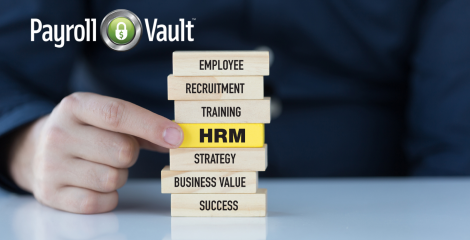Employee's Last Day: What Are Your HR and Payroll Requirements?

OCT 06, 2022
There comes a time in nearly every person’s career when they decide it’s time to leave. Whether they’re retiring after several decades with the same company or leaving after a few years for a different job elsewhere, as an employer, you need to be prepared for when the inevitable happens, and it’s time to say goodbye.
Signing Off
When one of your employees’ leaves, you need to make sure all the paperwork is in order. The first thing to do is obtain a signed letter of resignation. An employee may announce their resignation in writing, but if they tell you in person or over the phone, you’ll want to request the written notice for your records. You’ll also need to provide your exiting employee with paperwork of your own. You should give them information on any continued benefits they may receive after leaving, such as documents on COBRA health insurance coverage, severance pay, and retirement plans. Depending on which state you’re in, you may also need to provide state-required forms and notices on an employee’s last day. Check with your state Department of Labor to find out what documents your state requires.
If your existing employee anticipates moving soon, get them to fill out a change of address form. This allows you to send them their final W-2 and other tax documentation.

The Last Paycheck
An exiting employee always gets one last paycheck to cover the time they’ve worked between the last pay period and their departure. While the federal government doesn’t require you to provide that paycheck on your employee’s last day, some state governments do. Make sure to provide your exiting employee their last paycheck by the next regular payday. If the regular pay period’s payday passes without the exiting employee receiving their last paycheck, they may seek back wage recovery or other legal recourse.
Saying Farewells
When an employee leaves, there are people in the company who need to be informed. You should conduct an exit interview with your employee, preferably with someone from HR present. Find out their reason for leaving, so if there are any issues with the workplace environment, you can make improvements. You should thank your exiting employee for their time and work but avoid making promises of future employment since you can’t predict what circumstances may come up.
If HR isn’t present for the interview, inform HR yourself, as well as your employee’s supervisor and department. You’ll need to discuss with them the reassignment of duties, either permanently or until you hire a new employee. If your employee had clients or customers they worked with directly, contact them and let them know who will take over their account. Finally, inform whoever handles your payroll, whether it’s a third party or an in-house accountant, so they can record the departure.

Setting the Record Straight
When an employee leaves, not only do you need to record it, but you also need to maintain records of their employment for a certain length of time. The IRS requires you to maintain an employee’s tax records for at least four years after your last tax filing. Meanwhile, the Fair Labor and Standards Act (FLSA) requires you to maintain an employee’s payroll records for at least three years for every non-exempt employee, as well as all wage computation records for at least two years.
Packing Up and Locking Up
Make sure that your exiting employee has turned in all company property before leaving. It might not be difficult to remember to get a company vehicle or computer returned, but you also want to be sure to collect any keys, keycards, ID fobs, or other access items as well. Your exiting employee may be trustworthy, but if such access items are lost or stolen, they could end up in the hands of someone you wouldn’t trust with them.
You also need to secure your company information as soon as possible after the employee’s departure. Make sure to remove the exiting employee’s access to your computer network, email, financial accounts if they had access to them, and other confidential data once they’re gone. Again, this has less to do with mistrusting your exiting employee and is more about preventing unauthorized access.

Make Employee Departure Easier with Payroll Vault
An employee’s last day can be a bittersweet and emotional time for everyone. Make it easier on everyone by getting your HR outsourcing solution from Payroll Vault. We’re a boutique-style, local payroll service provider that provides solutions for your payroll and HR needs, including record-keeping and compliance with state and federal regulations. Get more information and find your nearest Payroll Vault location or contact Payroll Vault today.

